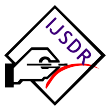Imp Links for Author
Imp Links for Reviewer
Research Area
Subscribe IJSDR
Visitor Counter
Copyright Infringement Claims
Indexing Partner
|
Published Paper Details
|
|
| Paper Title: | A Comprehensive overview of monoclonal antibodies production through various methods and applications |
| Authors Name: | Daphne sherine.S , Thirumalai.P , Poovarasan.P , Suhasini.G , Thilagavathi.A |
| Unique Id: | IJSDR2308148 |
| Published In: | Volume 8 Issue 8, August-2023 |
| Abstract: | In biomedical research, monoclonal antibodies are an indispensable tool. In 1975, Cesar Milstein and Georges J.F. Kohler developed the process for making monoclonal antibodies, for which they were awarded the 1945 Nobel Prize. Antigen injection to mice results in an immunological response, which is used to create monoclonal antibodies. The injected mouse is subsequently collected for its B cells. The utilisation of transgenic mice, the phage display platform, the hybridoma technologies, and the production of monoclonal antibodies from B-cells are all introduced in this overview. The types of MAbs created include humanised MAbs, which contain 10% mouse protein, chimeric MAbs, which contain 25% mouse protein, and murine MAbs, which contain 100% mouse protein. MAbs are utilised for cancer treatment, cancer diagnosis, and transplant rejection prevention. The synthesis of monoclonal antibodies from plants and the use of transgenic mice are both emerging strategies, but hybridoma technology is a more conventional approach. Polyclonal antibodies are not desired; monoclonal antibodies are. In comparison to hybridoma approach, the phage display method is a sophisticated technology that can be relied upon to create MAb at a faster rate. In-vitro and in-vivo procedures are used to continue both the hybridoma technique and the phage display method. Plastic cell culture equipment is required for the cell suspension culture technology, which can be applied to both small and big groups of people. The market value of MAbs in the medical industry is anticipated to increase significantly in the future. |
| Keywords: | Monoclonal antibodies; Hybridoma technology; Phage display method; Cancers; Graft rejections |
| Cite Article: | "A Comprehensive overview of monoclonal antibodies production through various methods and applications", International Journal of Science & Engineering Development Research (www.ijsdr.org), ISSN:2455-2631, Vol.8, Issue 8, page no.1000 - 1021, August-2023, Available :http://www.ijsdr.org/papers/IJSDR2308148.pdf |
| Downloads: | 000338719 |
| Publication Details: | Published Paper ID: IJSDR2308148 Registration ID:208214 Published In: Volume 8 Issue 8, August-2023 DOI (Digital Object Identifier): Page No: 1000 - 1021 Publisher: IJSDR | www.ijsdr.org ISSN Number: 2455-2631 |
|
Click Here to Download This Article |
|
| Article Preview | |
|
|
|
Major Indexing from www.ijsdr.org
| Google Scholar | ResearcherID Thomson Reuters | Mendeley : reference manager | Academia.edu |
| arXiv.org : cornell university library | Research Gate | CiteSeerX | DOAJ : Directory of Open Access Journals |
| DRJI | Index Copernicus International | Scribd | DocStoc |
Track Paper
Important Links
Conference Proposal
ISSN
 |
 |
DOI (A digital object identifier)
  Providing A digital object identifier by DOI How to GET DOI and Hard Copy Related |
Open Access License Policy
Social Media
Indexing Partner |
|||
| Copyright © 2024 - All Rights Reserved - IJSDR | |||






Facebook Twitter Instagram LinkedIn